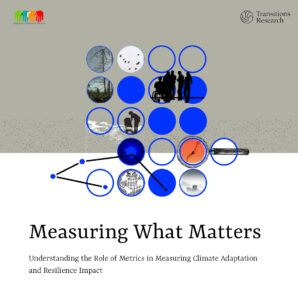The world of generative AI rapidly evolving. Since the public release of OpenAI’s ChatGPT in 2022 companies have racing two develop and deploy new generative AI models in rapid succession. Last week alone, two new models, DBRX and Jamba, have joined the burgeoning AI arms race, and with billions being invested into AI, we are likely to see more. The rapid proliferation of genAI has inaugurated a new phase of mainstreaming AI into our lives. In the most recent development, chip making company Nvidia recently announced the development of AI factories, which is enable the mass production of LLMs from unstructured data, anywhere and everywhere.
The hype surrounding these technologies has also kept pace with the rapid expansion of genAI’s capabilities, and development. For instance, Eric Schmidt, former CEO of Google, and others have suggested that genAI holds the potential to “alter the fabric of reality itself”, and researchers at Microsoft have also suggested amidst contestations, that the latest iteration of ChatGPT (i.e. GPT-4) has already exhibited “sparks of general artificial intelligence”. Others have likened the emergence of genAI to the invention of the Gutenberg press. Counter-narratives to hype on the other hand, suggest that genAI is to be treated as nothing more than a mere ‘toy’ – generating “facsimiles of a coherent copy.”
Even as industry and investors alike are abuzz with excitement, and fervor about the potential of the technology with talk of a genAI boom cycle, others suggest an imminent bust in the offing. Regardless of whether AI tech companies are over-valued or under-valued, in many ways the genie is out of the bottle – inciting both hope and hype, fear and excitement. The ability of genAI to not only synthesise text, images, and other mediums, but to also produce compelling literature, art, music, 3D models, and realistic videos marks a new era of machines producing content previously thought to lie within the exclusive domain of human beings. In this context, discussions in the public domain are rife with speculations and concerns regarding the implications of the technology not only on existing jobs (particularly in the domain of knowledge and creative work), but also, on the changing nature of work itself.
While there have been numerous reports about the impact of genAI on broader economic and labour market implications of AI – for instance, there are studies and projections arguing that genAI will lead 40-70% rise in worker productivity and that 300 million jobs or more will be automated in the future. But the fact of the matter is that these wider labour market trends, are going to play out at the level of our mundane and everyday life at work – where users interface and interact with these technologies. Thus, as Langdon Winner in his seminal essay “Do artifacts have politics?” puts it, it is not merely a conversation about how many jobs will be created, or lost, how many pollutants introduced, or how many data points included – rather as Winner argues, it is very much a conversation about how technologies like genAI will shape, affect and alter the nature and quality of human associations.
In light of these questions, one can look to the multiple narratives and speculations about genAI and its impact on the future of work. While it may be tempting to discard or disregard speculative ideas about the future as mere hype, narratives and visions of the future are plan an important role in shaping normative ideas, and actions regarding the future – creating societal buy-in, leading to the mobilization of resources, and shaping future trajectories. One emerging vision about the impact of genAI on the future of work is the potential of genAI to intensify the gigification of the jobs. One of the key ways in which genAI is expected to impact the gig economy is by automating and streamlining parts of the job. According to a recent McKinsey survey conducted in the US, the use of genAI tools at work could automate up to 30% of a worker’s job. Combined with an expanding gig economy, the potential for genAI tools to “augment” human labour has also given rise visions of the future of work (work 5.0), centred around “AI-assisted independent workers”. Within this vision, freelance platforms like Fiverr and Upwork argue that by speeding up the time it takes to complete tasks, AI-assisted freelance workers will be able to access “new jobs and new opportunities.”
However, a flipside of the growing opportunities for the gigification of labour is the already present pressure of freelancers having to lower labour rates, while delivering work on shorter turnaround times. Working conditions under the platformised gig economy, organised as a non-collective process, where on a day-to-day basis, workers interact almost exclusively with technological apps, already hamper collective bargaining power and unionisation avenues for gig workers. Also, the idea of an independent assisted worker also conjures up ideas of diminishing social solidarity, and increased possibility of work becoming a “lonely” and “isolating” experience.
The imaginary of the autonomous, independent, and AI-assisted worker not only raises questions about its impact on worker solidarity, bargaining power, and growing levels of precarity of work in the future, but also about as Langon Winner argues, “the nature and quality of our human associations”. As we become closely associated with machines more than humans at work and in our everyday lives, what does it mean for the way we work and communicate, and live?




